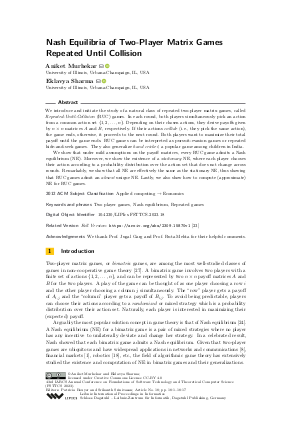LIPIcs.FSTTCS.2023.18.pdf
- Filesize: 0.7 MB
- 17 pages

 Creative Commons Attribution 4.0 International license
Creative Commons Attribution 4.0 International license





Feedback for Dagstuhl Publishing